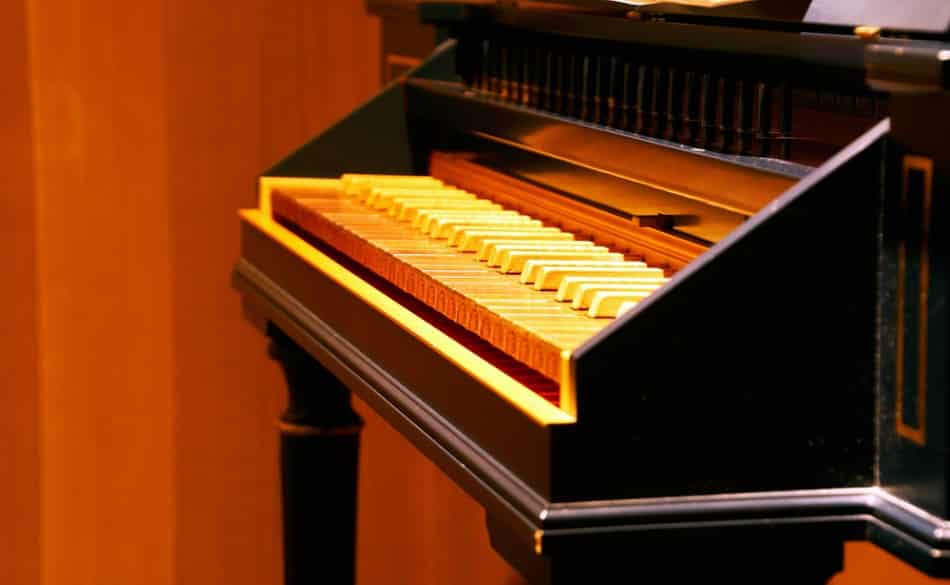
What is a Spinet Piano?
Before the harpsichord had become fully established as a favourite keyboard instrument the spinet took centre stage. Smaller than the harpsichord and slightly odd-looking, as its strings sit at an oblique angle to the keyboard, the spinet probably had its origins in 16th Century Italy.
A gentleman known as Giovanni Spinetti who was an instrument manufacturer could have given his name to the spinet. Given that the spinet was a more modest version of the grander harpsichord, its cost was also more in line with the budget of more families and this accounted for the large number manufactured during the 17th and 18th centuries. Essentially, the spinet produced its sound by a similar plucking method to the harpsichord and sounds similar if slightly thinner.
The word spinet became synonymous with the small piano, and in some cases the electronic piano. In the 1930s the spinet piano was in its heyday. The compact design of the instrument made it popular amongst many people who simply did not have space or finance to include a larger piano in their homes. As many spinets were made in the US, the 1930s was not a financially stable time as the Great Depression had taken hold of the country and money was scarce.
Interestingly, the spinet piano does not share the same mechanical method of producing its tone as its predecessor, the spinet. The Spinet piano instead used the similar hammer action common to most other pianos of the time. What was different was what became known as the ‘drop action’ mechanism.
As the spinet was significantly smaller than even an upright piano, the usual hammer directly striking string used in conventional pianos was not possible. The casing of the spinet was quite cramped which meant that drop action engaged the hammers in an indirect way that made a less distinct and crisp tone. The smaller cabinet also meant that there was not much room for tuning to easily take place or for any repairs to happen.
Given the smaller dimensions of the spinet piano, there were also limits in terms of its tonal response. The strings were by necessity shorter to be easily accommodated in the cabinet and this, in turn, made the quality of the sound produced by the spinet piano quite considerably inferior to that of even the humble upright piano.
The bass notes had a particularly poor tone quality that may have contributed to the decline of the instrument. As you might expect the volume produced by the spinet piano was not even close to that of a grand or upright. This limited the options for the instrument when it came to performances in larger venues than the home.
If accounts are to be believed the first spinet piano came up for sale to the public in May of 1935. The company, then called ‘Winter & Co’ later became the more renowned ‘Aeolian-American Corporation’. (This company later became Baldwin Pianos). This successful manufacturer produced ‘The Musette’ spinet and cost a princely sum of around $300.
When compared to the cost of an upright, this was an attractive and affordable price tag. Most of the spinets that followed were easily identifiable by a modest height of around 37 inches or less. This gave the instrument some appeal to younger learners although there is a school of thought that suggests the mechanism made learning the piano more challenging than it would have on a conventional piano.
The Gulbransen Piano Company were perhaps better known for their ‘player-pianos’. The firm, based in Chicago, Illinois was established in 1904 and also became known for its spinet pianos. By 1917 Gulbransen had become a leader in the production of quality pianos. Their marketing campaign promised a piano that was ‘easy to play’ as they were aiming for the younger end of the aspiring piano player market.
During the Second World War Gulbransen and Steinway & Sons were the only two manufacturers who were selected by the government specifically for their use. The Gulbransen spinets have now become quite a sort after as antique instruments, but if you choose to follow that route be sure what you are buying and what to expect.
Wurlitzer also manufactured a spinet piano that was for sale from around 1935. This instrument was a delicate 39 inches in height, making it one of the smallest pianos available. The cases for the Wurlitzers were particularly attractive and even though they exploited their unique version of the drop action mechanism there were still the predictable limitations both of tone production and performance.
Hallet Davis, Kimball and Weber made spinet pianos too. As second-hand pianos, these still have a good level of interest from buyers. Even if the spinets do not compare to the modern-day upright or grand piano, they are beautifully made and enjoyable to play.
Plenty of these diminutive instruments are still available to buy through a broad variety of outlets. It seems that the majority of these spinet pianos are located in the US but no doubt there are options in Europe too.
Given the rise in piano manufacturing techniques in the last few decades and the increasing amount of electronic keyboard options, it seems unlikely that the spinet piano will ever make a come-back. It represents an age when the requirements of players were very different and technology not yet saturated by electronic alternatives. They provided a viable alternative to the expensive upright and grand pianos and probably gave invaluable learning opportunities to countless aspiring musicians for many years.
